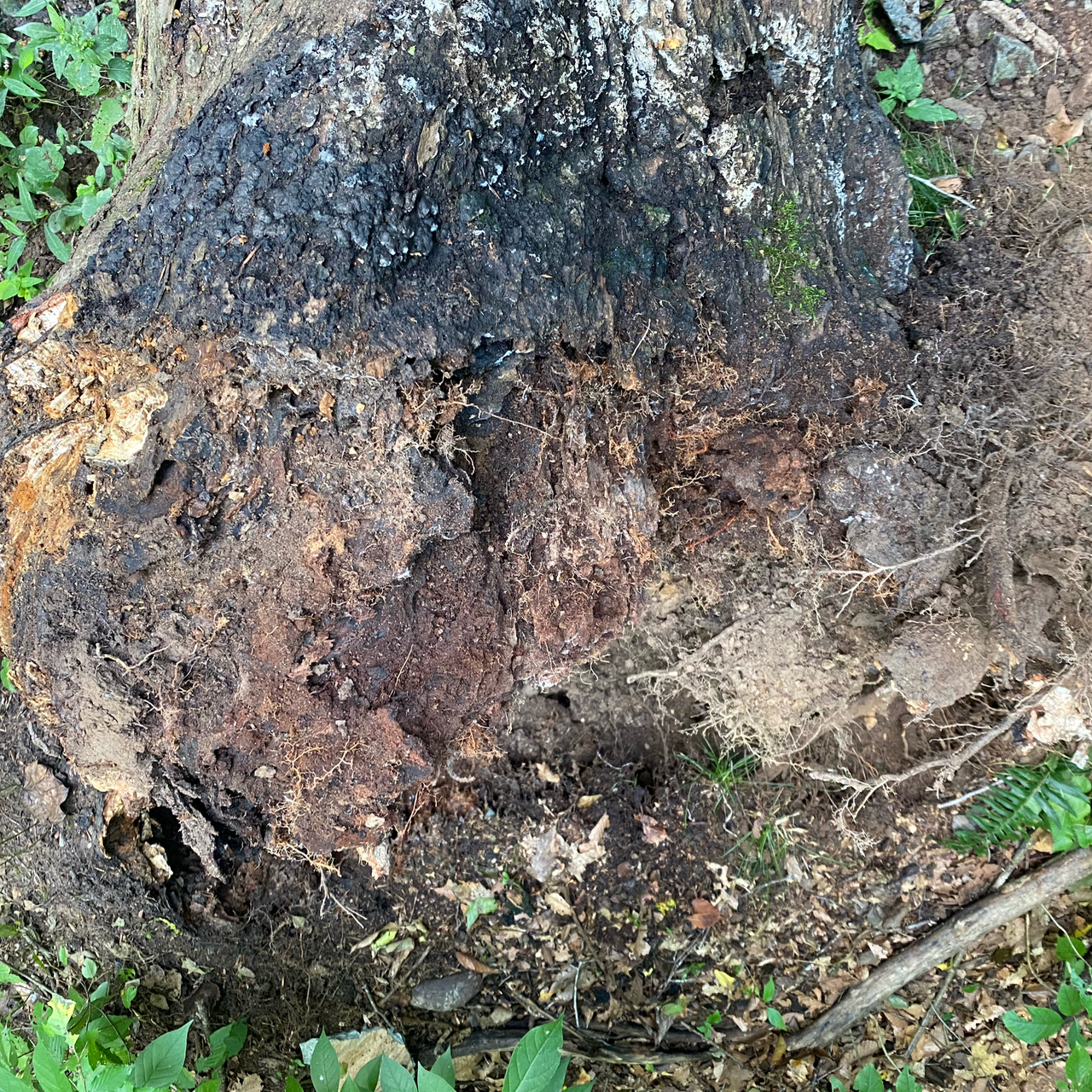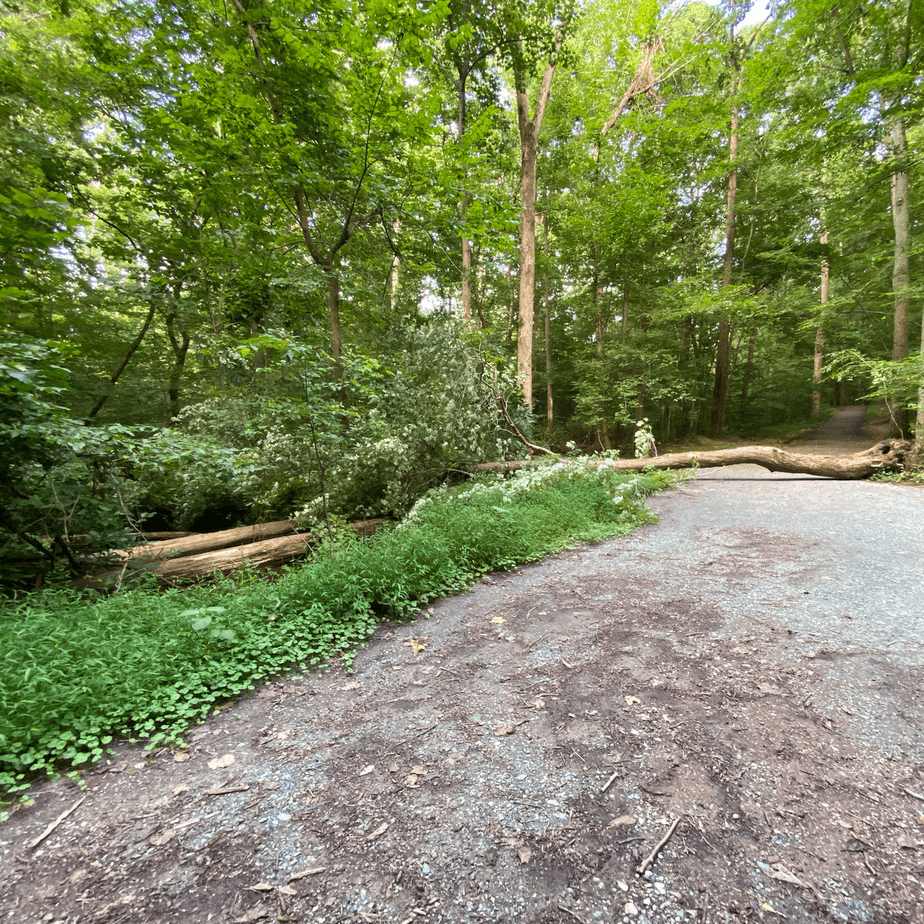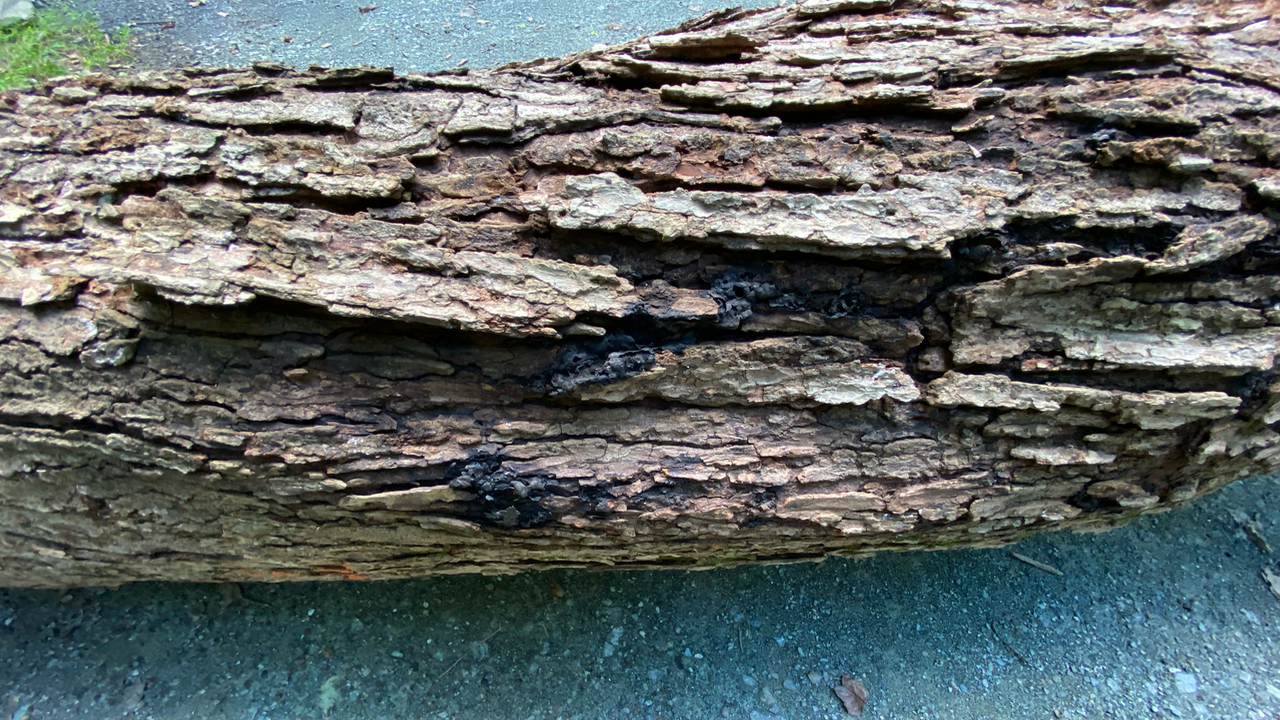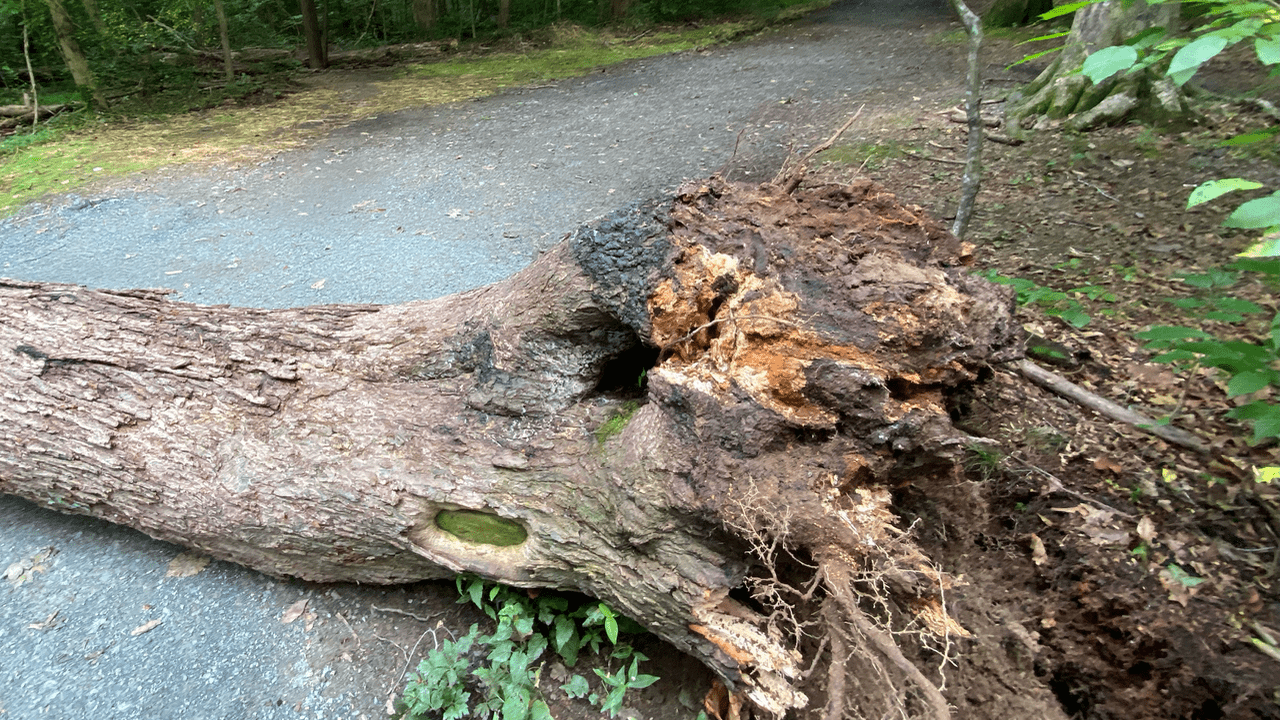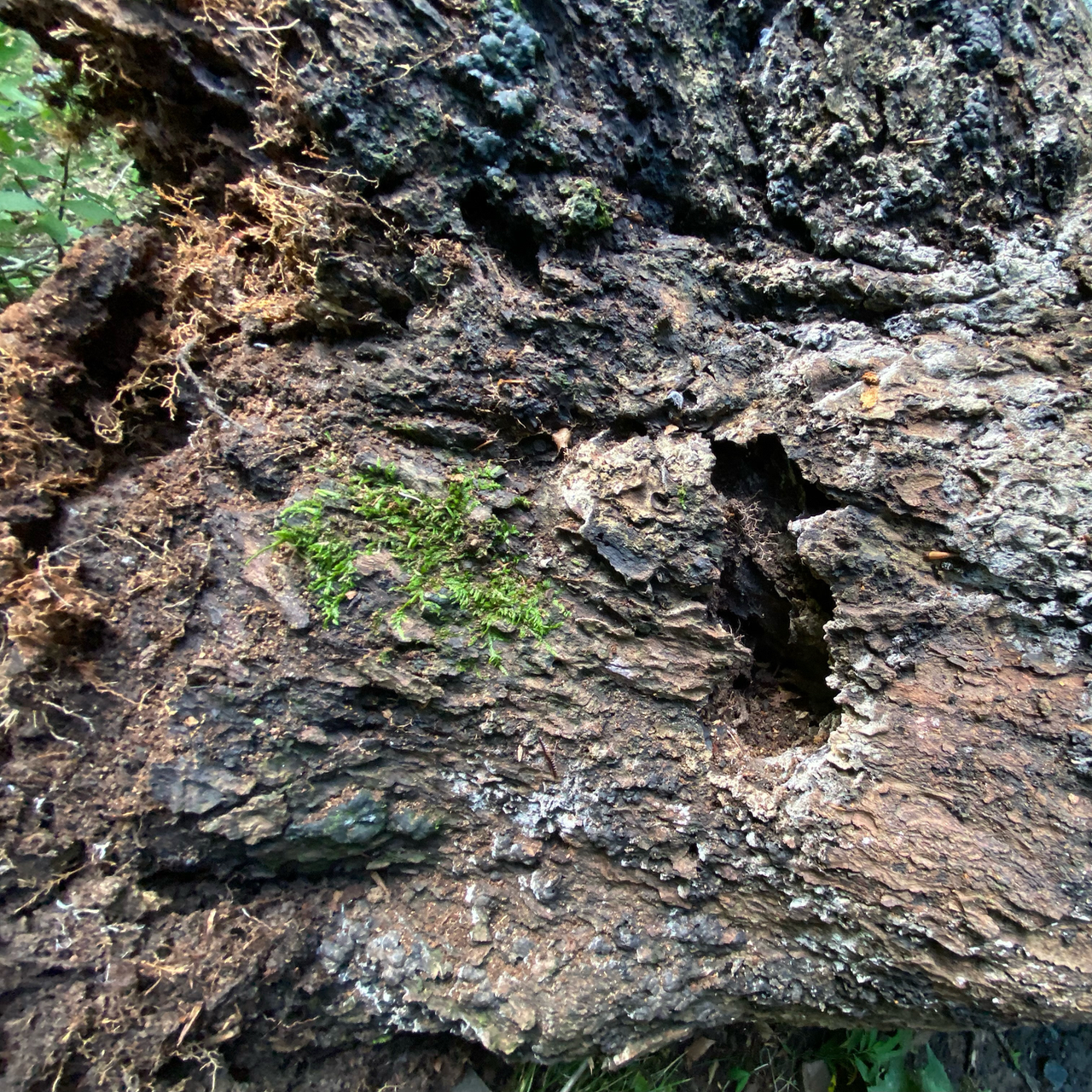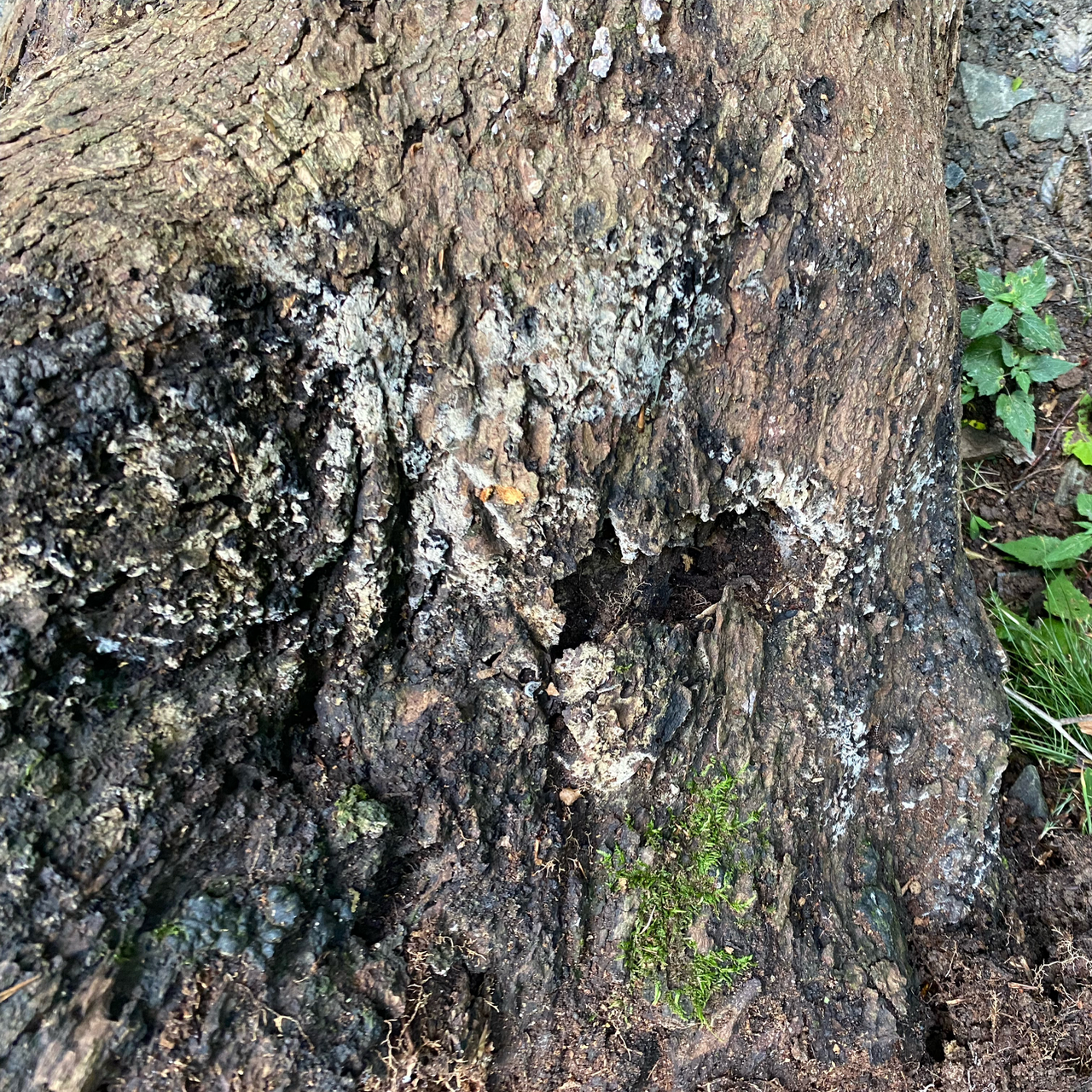It is not uncommon to see black slime on a tree trunk. I've done lot's of posts on trunk wounds and how they can be an indicator of root or tissue problems. I was out walking a couple of weeks ago. I heard a loud crash close by. On my way home, I saw what tree went down. This tree provides a perfect example of what can happen to the structural integrity of a tree when there is black slime clearly present. Read on to find out more.
In many ways, this tree looks healthy. It has a full canopy. The leaves are normal size and bright green. It does have a few trunk scars, however lots of trees have trunk scars that do not cause their demise. Closer inspection to the bottom six feet of the trunk provides some possible clues regarding why the tree fell.
Signs of Bacterial Wetwood
The black oozing spots on this tree are signs of bacterial wetwood. Wood gets damaged causing moisture to accumulate. This can lead to bacterial overgrowth that continues to damage wood cells. As a result, fermented black slime erupts from holes and it can run down the bark. It is accompanied by a foul smell. These eruptions aren't really very big, however they can be indicators of a big problem hidden under the bark.
Did Slime Flux or Bacterial Wetwood Cause Failure?
I can't make any statement regarding direct causation of this tree's failure. Bacterial wetwood is clearly present, however the roots are gone. What's left doesn't look weepy. I also can't say that it didn't contribute to the failure of this tree. There is no way to tell how long the bacteria were present in this tree. There is little to no root tissue left.
So Should You Be Worried if You See Black Slime on Your Tree?
As I documented in these photos, the canopy of a tree can look great, while big problems are lurking inside. Should you be concerned if you see Black Slime on a tree? In my opinion, if a tree is close to your house and it has clear indications of Black Slime, you should get it assessed. The bacteria eat away at live tissue causing structural damage. Trees can survive with Black Slime, however there can be confounding issues that ultimately make the Black Slime worse. Black Slime, trunk wounds, uneven canopies, leans, and a host of other issues are cumulative. If you are concerned get an assessment from a professional.
